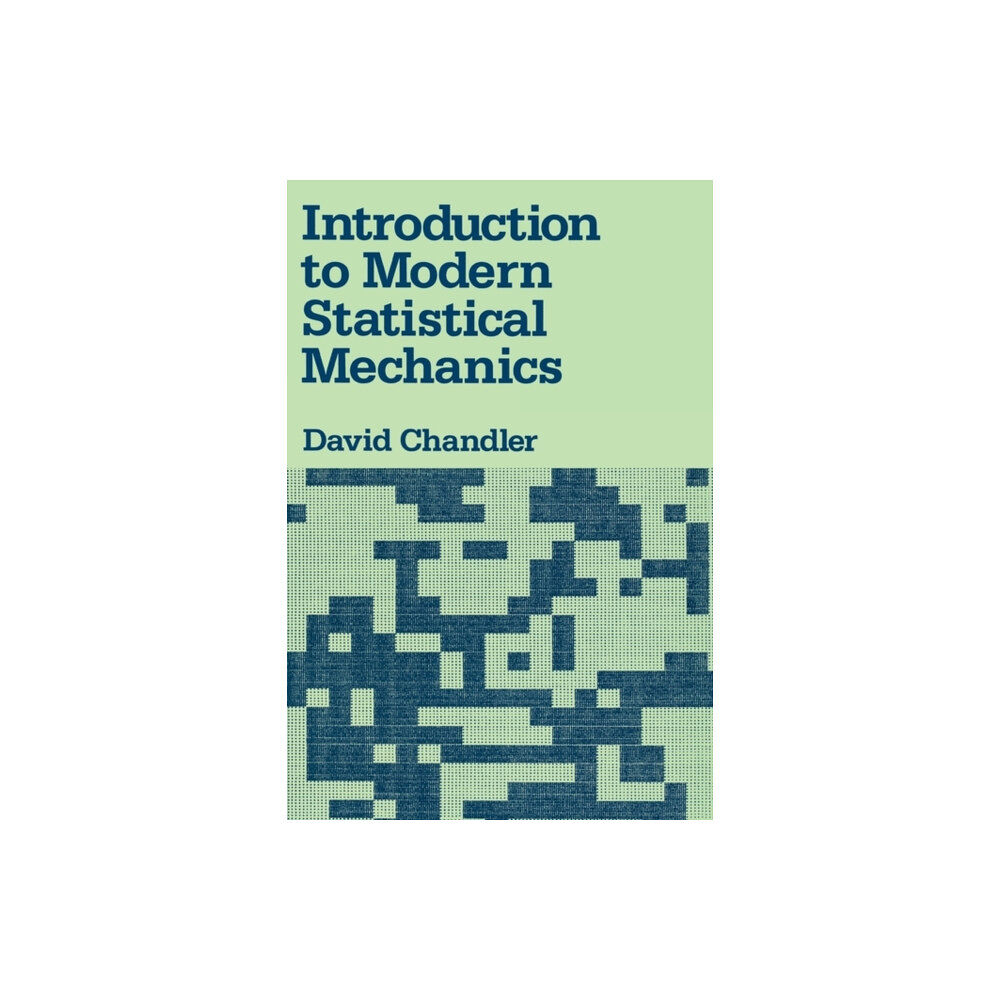- Hem
- Böcker
- Kurslitteratur
- Matematik & Naturvetenskap
- Introduction to Modern Statistical Mechanics (häftad, eng)

Introduction to Modern Statistical Mechanics (häftad, eng)
This text developed from materials the author has used in a one-semester course on elementary statistical mechanics. It assumes readers have...
1 849 kr
1 895 kr
Slut i lager
- Fri frakt
Fri frakt över 299:-
Snabb leverans
Alltid låga priser
Produktbeskrivning
This text developed from materials the author has used in a one-semester course on elementary statistical mechanics. It assumes readers have had courses in calculus and physical chemistry. Its purpose is not only to give students a deeper understanding of thermodynamics and the principles of equilibrium statistical mechanics, but also to introduce them to the modern topics of Monte Carlo sampling, renormalization group theory, and the fluctuation-dissipation theorem.
By frequent use of simplified models, the author has kept the mathematics in the text relatively simple while presenting many of the sophisticated ideas in the field. His approach is to deal first with macroscopic thermodynamics, then with microscopic statistical principles.
The Second Law of Thermodynamics appears as the direct consequence of the statistical assumption that microscopic equilibrium is the state of greatest randomness. The different ensembles and the role of fluctuations are treated before non-interacting ideal systems and phase transformations are discussed.
The treatment of phase transitions relies on the Ising model, which is also used to explain the Monte Carlo method. The last two chapters deal with equilibrium statistical mechanics of classical fluids and with dynamics, that is, relaxation an molecular motion in macroscopic systems which are at or close to equilibrium.
This is a forward-looking text suitable for use by advanced undergraduate or beginning graduate students of chemistry, biochemistry, chemical engineering and physics.
By frequent use of simplified models, the author has kept the mathematics in the text relatively simple while presenting many of the sophisticated ideas in the field. His approach is to deal first with macroscopic thermodynamics, then with microscopic statistical principles.
The Second Law of Thermodynamics appears as the direct consequence of the statistical assumption that microscopic equilibrium is the state of greatest randomness. The different ensembles and the role of fluctuations are treated before non-interacting ideal systems and phase transformations are discussed.
The treatment of phase transitions relies on the Ising model, which is also used to explain the Monte Carlo method. The last two chapters deal with equilibrium statistical mechanics of classical fluids and with dynamics, that is, relaxation an molecular motion in macroscopic systems which are at or close to equilibrium.
This is a forward-looking text suitable for use by advanced undergraduate or beginning graduate students of chemistry, biochemistry, chemical engineering and physics.
| Format | Häftad |
| Omfång | 288 sidor |
| Språk | Engelska |
| Förlag | Oxford University Press Inc |
| Utgivningsdatum | 1987-12-10 |
| ISBN | 9780195042771 |
Specifikation
Böcker
- Häftad, 288, Engelska, Oxford University Press Inc, 1987-12-10, 9780195042771
Leverans
Vi erbjuder flera smidiga leveransalternativ beroende på ditt postnummer, såsom Budbee Box, Early Bird, Instabox och DB Schenker. Vid köp över 299 kr är leveransen kostnadsfri, annars tillkommer en fraktavgift från 29 kr. Välj det alternativ som passar dig bäst för en bekväm leverans.
Betalning
Du kan betala tryggt och enkelt via Avarda med flera alternativ: Swish för snabb betalning, kortbetalning med VISA eller MasterCard, faktura med 30 dagars betalningstid, eller konto för flexibel delbetalning.
Specifikation
Böcker
- Format Häftad
- Antal sidor 288
- Språk Engelska
- Förlag Oxford University Press Inc
- Utgivningsdatum 1987-12-10
- ISBN 9780195042771
